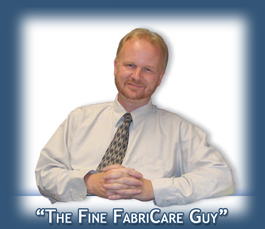Hello Jim -
I'm hoping you can assist me with a problem carpet. I've seen your posts on the various Internet bulletin boards and realize you are amongst the most respected professionals within the carpet cleaning industry.
I cleaned a carpet a week ago Friday and was called back because of an issue which caused brown, elongated spotting on the carpet. I've cleaned it twice since then but the marks continue to return after each cleaning but in different areas. In some places on the carpet, the the marks seem to correspond with the end of wand strokes and/or where a pad moved across the carpet. I've attached several pictures so you can see the problem areas.
Here are the particulars:
- Carpet fiber is Olefin as determined via the burn test and the fibers floated on water without absorbing.
- Carpet style is cut pile, perhaps Saxony.
- Carpet had not been cleaned in four years and was extremely soiled. No kids or pets.
- Cleaning process: pre-vacuumed using a Proteam commercial with beater brush; applied cleaning solution; agitated with machine pad (initial cleaning only); rinsed and extracted with Prochem Peak; post-padded with white cotton pad (most recent cleaning only); groomed. Ceiling fans in all rooms set on high.
- Cleaning agents used: 1) Traffic Slam prespray boosted with Prochem Oxy Plus & End Zone rinse; 2) Zone Perfect prespray & Prochem All Fiber Rinse; 3) Zone Perfect & End Zone.
I've never run into this before so any advice or suggestions would be greatly appreciated.
Thank you
Hello
I am always happy to help someone in need in our industry, and I have an idea of what might help.
- Do you know the prior cleaning history of the carpet (before the four year interval?)
- When you clean carpet, do you release the trigger valve on your back stroke, or do you leave the trigger on as you push the wand forward?
- Do you have available any of the following products? Bridgepoint Encapugard or Pros Choice ARA?
Best regards,
Jim Pemberton
Hello Jim -
Thanks very much for replying.
Cleaning history: I am told by the current home owner that the carpets were cleaned by the previous owner just before she moved into the house about four years ago. She has no idea what cleaning method was used. After the second cleaning resulted in the same issue, I asked if she could get in touch with the previous owners to find out how the carpets were cleaned but she believes they moved out of the area.
Wand strokes: I have the trigger engaged on the upstroke (pushing forward), release it just before completing that stroke, and the back stroke is dry.
ARA/Encapugard: I don't have either on the van - thought I had ARA but it is CSS - but can purchase either (would lean towards ARA) easy enough.
Again, thank you for taking the time to assist. I truly appreciate it.
Hello
Thank you for your feedback. The answer would be easier if you HAD kept the valve on during your backstroke, as that does render the type of discoloration that is shown in the pictures.
Nevertheless, the problem appears to be wicking, regardless of the cause. Carpets made from olefin fibers have a greater tendency to wick, and the history of an unknown prior cleaning and a long period before professional cleaning reinforce that to me.
I think you've introduced enough chemistry to this carpet. Unless the carpet has become heavily soiled since your last attempt, I'd use End Zone only the next time, with your water pressure set at 250-300 PSI, several vacuum strokes, and then apply the Anti Resoiling Agent.
If you have airmovers of any sort, use them to dry the carpet quickly.
Let me know how this works for you.
Jim Pemberton
